Sean Bienvenidos, Japonsistasarqueológicos, A Una Nueva Entrega Arqueológica, En Esta Ocasión Os Voy
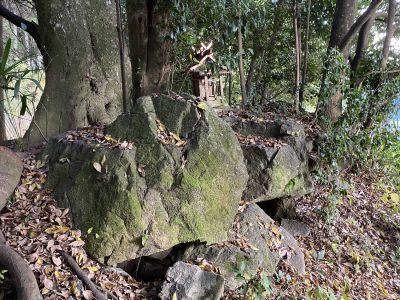


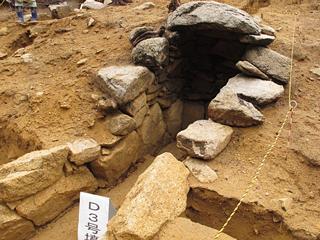

Sean bienvenidos, japonsistasarqueológicos, a una nueva entrega arqueológica, en esta ocasión os voy a hablar del túmulo Shofuku-ji una vez dicho esto, pónganse cómodos que empezamos. - ¿Dónde se localiza el túmulo Shofuku-ji? Se localiza en la ciudad de Kawanishi, en la prefectura de Hyōgo, localizado a su vez en la región de Kansai. La cámara funeraria se descubrió en la era Meiji. En 1934, el Dr. Sueharu Umehara de la Universidad de Kyoto realizó un estudio de campo y en la década de 1970, se realizó un estudio llevado a cabo por la Junta de Educación de la ciudad de Kawanishi que descubrió un ataúd de madera en la que se enterraron: puntas de flecha de hierro, espadas de hierro. - Data del siglo V y el siglo V y corresponde al periodo Kofun, con una longitud total de 40 m y fue construido a principios del siglo VI. Se descubrió un haniwa, que fue desenterrado durante la excavación, y se hizo de una manera muy similar al haniwa en la región de Owari que corresponde a la actual prefectura occidental de Aichi. - Espero que os haya gustado y nos vemos en próximas publicaciones, que pasen una buena semana. 日本の考古学者の皆さん、ようこそ!今回は、正福寺古墳についてお話します!では、早速始めましょう。 - 正福寺塚はどこにあるのですか?関西地方に位置する兵庫県川西市にあります。古墳が発見されたのは、明治時代です。1934年に京都大学の梅原末治博士が現地調査を行い、1970年代には川西市教育委員会の調査で木棺が発見され、その中に鉄鏃、鉄剣、鉄刀が埋められていました。 - 5~5世紀の古墳時代に相当し、全長40m、6世紀初頭に造られたものである。発掘調査で出土した埴輪は、現在の愛知県西部の尾張地方にある埴輪と酷似した作りのものが発見されています。
Welcome, Japanese archaeologists, to a new archaeological instalment, this time I am going to talk to you about the Shofuku-ji tumulus, having said that, make yourselves comfortable and let's get started. - Where is the Shofuku-ji mound located? It is located in the city of Kawanishi, Hyōgo Prefecture, located in the Kansai region. The burial chamber was discovered in the Meiji era. In 1934, Dr. Sueharu Umehara of Kyoto University conducted a field survey and in the 1970s, a survey conducted by the Kawanishi City Board of Education uncovered a wooden coffin in which were buried: iron arrowheads, iron swords, and iron swords. - It dates from the 5th-5th century and corresponds to the Kofun period, with a total length of 40 m and was built in the early 6th century. A haniwa, which was unearthed during excavation, was discovered and made in a very similar manner to the haniwa in the Owari region of what is now western Aichi Prefecture. - I hope you liked it and see you in future posts, have a nice week.
More Posts from Noticiasarquelogicasjaponesas and Others

Sean bienvenidos, japonistasarqueológicos a un nuevo especial, en esta ocasión vengo a celebrar que ya somos 2726 seguidores mil gracias por el apoyo que le dais a este proyecto que empezó en diciembre de 2021 y para esta ocasión os voy a traer una publicación de historia del arte japonés, ya que me lo habéis pedido. Además, es el arte que más me gusta, ya el del resto del mediterráneo, no me gusta para nada en absoluto dicho esto comencemos. - La pintura que podéis apreciar data del siglo XIX fue realizada en papel de hierva, el autor se llama Hiroshige Utagawa, pero su nombre real fue Tokutaro, estudio el arte occidental y fue uno de los personajes más destacados en lo que respecta al arte del paisaje. ¿Conocían a este artista? ¿Os gustaría que hablara de él? Dejármelo en los comentarios. - Espero que os haya gustado y nos vemos en próximas publicaciones de arqueología e historia japonesa. - 考古学ジャポニストの皆さん、ようこそ、新しいスペシャルへ。今回は、私たちのフォロワーがすでに 2726 人に達したことを祝うために来ました。2021 年 12 月に始まったこのプロジェクトへのサポートに感謝します。この機会に、日本美術史の出版をお願いしたので。 さらに、それは私が最も好きな芸術であり、地中海の残りの部分ではまったく好きではありません. そうは言っても、始めましょう. - ご覧になれる絵は19世紀にさかのぼる草紙に描かれたもので、作者は広重さんです。 歌川は本名を徳太郎といい、洋画を学び、山水画の第一人者でした。 このアーティストを知っていましたか? 彼について話してくれませんか? コメントで私に任せてください。 - 考古学と日本史の今後の出版物でお会いしましょう。 - Welcome, archeological japonists to a new special, this time I come to celebrate that we are already 2726 followers, thank you very much for the support you give to this project that began in December 2021 and for this occasion I am going to bring you a publication of the history of the Japanese art, since you have asked me. In addition, it is the art that I like the most, and that of the rest of the Mediterranean, I do not like it at all. Having said that, let's begin. - The painting that you can see dates back to the 19th century and was made on grass paper. The author's name is Hiroshige. Utagawa, but his real name was Tokutaro, he studied western art and was one of the most prominent people when it comes to landscape art. Did you know this artist? Would you like me to talk about him? Leave it to me in the comments. - I hope you liked it and see you in future publications of archeology and Japanese history.





Banchō Sarayashiki, también conocida como okiku-san, en vida un aciago día, se le cayeron los 10 platos y por desgracia uno de ellos se rompió y su amo la asesinó y arrojó su cuerpo a un pozo.-Por eso cada noche aparece para contar los platos con una voz tenue, uno, dos, tres... así hasta nueve ¡Exclamando falta un plato! - La historia se remonta al periodo Edo. ¿Conocían esta pequeña historia? Que pasen una buena semana. - お菊さんこと皿屋敷番長は、ある運命の日に10枚の皿を落とし、運悪くそのうちの1枚が割れてしまい、主人に殺害されて井戸に投げ込まれました。 - そのため、毎晩、かすかな声で皿を数え、1枚、2枚、3枚...と9枚まで数え、「1枚足りない!」と叫ぶのだそうです。 - この話は江戸時代まで遡りますが、皆さんはご存知でしたか?それでは、今週も良い一週間をお過ごしください。 -Banchō Sarayashiki, also known as okiku-san, in life one fateful day, dropped the 10 plates and unfortunately one of them broke and her master murdered her and threw her body into a well. - That's why every night she appears to count the plates with a faint voice, one, two, three... up to nine... exclaiming that one plate is missing! - The story goes back to the Edo period. Did you know this little story? Have a nice week.




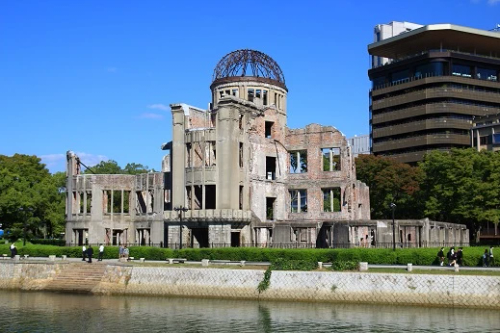
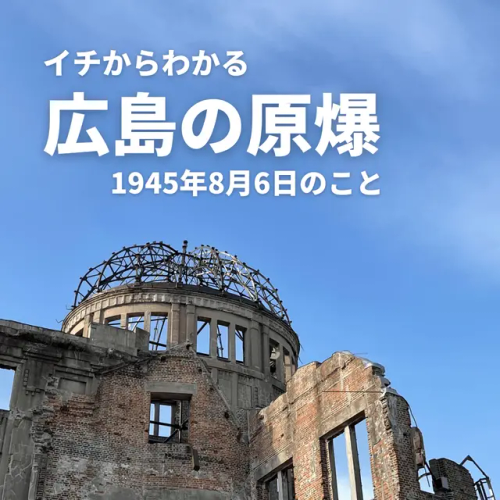

Sean bienvenidos, japonistasarqueologicos a una nueva entrega de historia nipona en la que os pongo imágenes de los epicentros tras los bombardeos del 6 y 9 de agosto, una vez dicho esto pónganse cómodos que empezamos. - Antes que nada me gustaría poner un poco de contexto histórico para poder entender la situación, Japón estaba perdiendo la guerra y estaban buscando formas desesperadas para frenar el avance norteamericano que se cernía sobre el país del sol naciente. Recurrirán a los kamikazes vía aérea y terrestre de hecho se estaba preparando en Japón unas fuerzas de defensa con mujeres, tras la batalla de Okinawa en los 82 días de combate murieron cerca de 100.000 soldados japoneses, más de 12.000 estadounidenses y al menos 100.000 civiles locales, incluidos cientos que fueron obligados a matarse a sí mismo, también se perdería el Yamato en el último kamikaze. - Ciudad de Hiroshima:6 de agosto 1945, Little Boy fue arrojado desde el Enola Gay, matando a más de 70.000 personas al instante y muchas más morirían consecuencia de la radiación. Ciudad de Nagasaki: 9 de agosto 1945, Fat Man, fue la otra bomba atómica lanzada por el mismo avión, causando la muerte de 49.000 personas el día de la explosión. - Conclusión: Los costos fueron terribles, ya que las propias consecuencias lo fueron aún más, espero que no se tengan más bombas atómicas, ni de cualquier otro tipo, el ser humano debería aprender de los errores de la historia para que se acabaran las guerras. Publicación en memoria de todos los que murieron por las bombas atómicas. - Esperó que os haya gustado y nos vemos en próximas publicaciones que pasen una buena semana. - 日本の考古学者の皆さん、ようこそ日本史の新連載へ。8月6日と9日の原爆投下後の爆心地の画像をお届けします。 - まず最初に、この状況を理解するために歴史的背景を説明したいと思う。日本は戦争に負け、日出ずる国に迫りつつあったアメリカの進撃を食い止めるための絶望的な方法を模索していた。沖縄戦の後、82日間の戦闘で10万人近くの日本兵が死に、1万2000人以上のアメリカ兵と、自殺を余儀なくされた数百人を含む少なくとも10万人の民間人が亡くなった。 - 広島市:1945年8月6日、エノラ・ゲイからリトルボーイが投下され、7万人以上が即死。長崎市:1945年8月9日、ファットマンが同じ飛行機から投下され、爆発当日に49,000人が死亡した。 - 結論:原爆投下は、その結果そのものもさることながら、その代償もまた恐ろしいものであった。 私は、原爆や他のいかなる種類の爆弾もこれ以上投下されないことを願うとともに、人類が歴史の過ちから学び、戦争がなくなることを願っている。原爆で亡くなられたすべての方々を悼んで。 - お気に召していただけたなら幸いである。 良い一週間を. - Welcome, Japanese archaeologists, to a new instalment of Japanese history in which I bring you images of the epicentres after the bombings of 6 and 9 August, so make yourselves comfortable and let's get started. - First of all I would like to give some historical context to understand the situation, Japan was losing the war and they were looking for desperate ways to stop the American advance that was looming over the land of the rising sun. They resorted to kamikazes by air and land in fact they were preparing in Japan a defence force with women, after the battle of Okinawa in the 82 days of combat nearly 100,000 Japanese soldiers died, more than 12,000 Americans and at least 100,000 local civilians, including hundreds who were forced to kill themselves, they would also lose the Yamato in the last kamikaze. - Hiroshima City: 6 August 1945, Little Boy was dropped from the Enola Gay, killing over 70,000 people instantly and many more would die from radiation. Nagasaki City: 9 August 1945, Fat Man, was the other atomic bomb dropped from the same plane, killing 49,000 people on the day of the explosion. - Conclusion: The costs were terrible, as the consequences themselves were even more so. I hope that there will be no more atomic bombs, or any other type of bomb, and that mankind should learn from the mistakes of history so that wars will end. Publication in memory of all those who were killed by atomic bombs. - I hope you liked it and see you in future publications. Have a good week.





Sean bienvenidos japonítasarqueológicos a una nueva entrega de última hora, china amenaza seriamente las aguas gubernamentales Taiwanesas, con una maniobras de entrenamiento. - Ya hace poco hice una publicación sobre el tema, mencioné que lo que China quiere es apoderarse de la industria de microchips para adueñarse de el mundo. - Esto es una amenaza ya que a tan solo 749 kilómetros esta Okinawa, lo cual Japón no se va a quedar de brazos cruzamos. - ¿Se trata de una guerra fría 2.0? ¿Qué harán los japoneses al respecto?¿Reclamaran las islas Kuriles? - Espero que os haya gustado y nos vemos el día 21, hasta entonces pasen una buena semana. - 日本の考古学者の皆さん、ようこそ!新しい速報です!中国は、訓練操作で台湾の政府水域を本気で脅かしています。 - 先日、中国が世界征服のためにマイクロチップ産業を買収しようとしているといった内容の記事を書きました。 - 沖縄は749キロしか離れていないので、これは脅威であり、日本は黙って見ているわけにはいきません。 - 冷戦2.0か? 日本はどうするのか? 千島列島の領有権を主張するのか? - 21日にお会いしましょう、それまで良い一週間をお過ごしください。 Welcome, Japanese archaeologists, to a new breaking news item, China is seriously threatening Taiwanese government waters with a training manoeuvre. - I recently did a post on the subject, I mentioned that China wants to take over the microchip industry to take over the world. - This is a threat because Okinawa is only 749 kilometres away, which Japan is not going to stand idly by. - Is this a Cold War 2.0? What will the Japanese do about it? Will they claim the Kuril Islands? - I hope you liked it and see you on the 21st, until then have a good week.


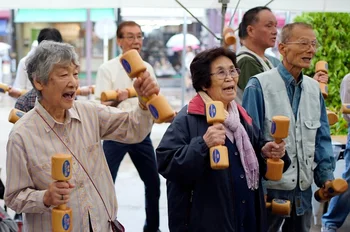
Sean bienvenidos japonistasarqueologicos a una nueva actualidad del país del sol naciente, en esta ocasión en el tema de actualidad de esta opción será la natalidad y de cómo afectará al país dicho esto pónganse cómodos que empezamos. - La esperanza de vida en Japón es la más alta del mundo, llegando a los 100 años, lo cual lo convierte en el país más longevo del mundo, Japón para 2046, según nuevos estudios llevados a cabo por National Geographic, será de 37.5% de población envejecida. - La tasa de natalidad y los estudios realizados por Statista Research Department en septiembre 29, 2022 natalidades son de 1,69. Seguramente llegue a un punto en el que se llegará a un equilibrio entre la tasa de natalidad y la tasa de mortalidad. - ¿Cuál será el destino de Japón? ¿Qué opinan al respecto? Espero que os haya gustado y nos vemos en próximas publicaciones que pasen una buena semana. - 今回は「出生率」と「出生率の推移」についてです。 - 日本の平均寿命は、それが世界で最も長く生きている国になり、100年に達し、世界で最も高いです、日本は2046年までに、ナショナルジオグラフィックが実施した新しい研究によると、人口の37.5%が高齢化されることになります。 - 2022年9月29日にStatista Research Departmentが行った研究によると、出生率・出生数は1.69である。おそらく、出生率と死亡率が均衡する地点に達するだろう。 - 日本の運命はどうなるのか、あなたはどう思いますか?私はあなたがそれを好きで、将来の記事であなたを参照してください願っています良い週を持っています。 - Welcome japanistasarqueologicos to a new news from the country of the rising sun, this time the topic of this option will be the birth rate and how it will affect the country, that said, make yourselves comfortable and let's start. - Life expectancy in Japan is the highest in the world, reaching 100 years, which makes it the longest living country in the world, Japan by 2046, according to new studies conducted by National Geographic, will be 37.5% of the population aged. - The birth rate and birth rates are 1.69, according to studies conducted by Statista Research Department on September 29, 2022. It will probably reach a point where a balance will be reached between the birth rate and the death rate. - What will Japan's fate be, and what do you think about it? I hope you liked it and see you in future posts have a good week.
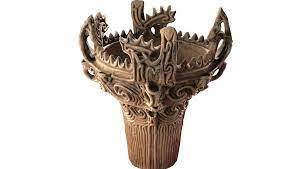



Introducción a la cerámica Jōmon: - Tipos cerámica Jōmon se dividen en 5 : 1 fukabachi 2 hachi 3 asabachi 4 tsubo 5 chuko - ¿Cónocian algúnos de estos tipos? os deseo un feliz día un cordial saludo. - Introduction to Jōmon Pottery: - Jōmon ceramic types are divided into 5: 1 fukabachi 2 hachi 3 asabachi 4 tsubo 5 chuko - Do you know any of these guys? I wish you a happy day, a cordial greeting. - 縄文土器の紹介: - 縄文土器は次の5種類に分類されます。 深鉢 1個 2ハチ 3アサバチ 4坪 5中子 - この人たちを知っている人はいますか? 幸せな 一日をお祈りします。心からのご挨拶を申し上げます。



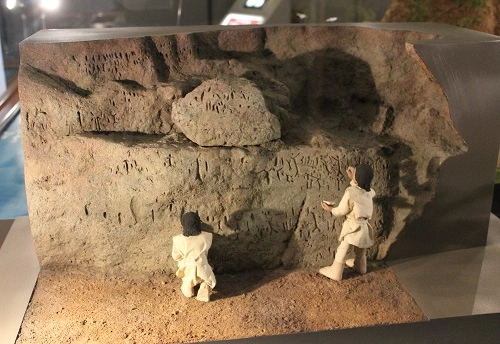

日本の考古学者の皆さん、日本の考古学の新しい記事へようこそ。そうは言っても、気を楽にして始めましょう。 - 1950年代、北海道余市市のフゴッペ洞窟で、縄文時代後期1000年から500年頃の一連の彫刻が発見された。 海水浴のため蘭島を訪れていた札幌市の高校生らが発見した。 これに先立ち、1927年に国鉄函館本線の土塁工事中に9個の彫刻が発見された。 - 洞窟からは動物や魚の骨が多数出土しました。 貝類では二枚貝やカタツムリ、魚類ではヒラメやヒラメなどの沿岸魚からクジラまで、哺乳類ではシカのほか、キツネやタヌキ、オオカミの骨も見つかりました。 - このことからも、当時は食糧が豊富にあり、人々は狩猟や漁業に専念していたことがわかります。 本州で稲作を中心とした弥生文化が発展していた頃、北海道では稲作をする必要はありませんでした。 人を乗せた船の彫刻は北アジアで見られるものと似ていると言われています。 - 気に入っていただければ幸いです。今後の投稿でお会いしましょう。良い一週間をお過ごしください。 - Welcome, Japanesearchaeologicalists, to a new installment of Japanese archaeology. Having said that, make yourself comfortable and let's begin. - In the 1950s, a series of engravings dating from the late Jomon period 1000-500 were discovered in Hokkaido Prefecture in the Fugoppe Cave located in the city of Yoichi. They were discovered by high school students from Sapporo who were visiting Orchid Island to bathe in the sea. Before that, nine carvings were discovered in 1927 during earthworks on the Hakodate main line of the Japanese National Railways. - Many animal and fish bones were excavated in the cave. Shellfish include bivalves and snails, fish range from coastal fish such as flounder and flounder to whales, and mammals include deer, and bones of foxes, raccoon dogs and wolves were also found. - This shows that at that time food was abundant and that people dedicated themselves to hunting and fishing. When the Yayoi culture based on rice cultivation was developing in Honshu, there was no need to grow rice in Hokkaido. The carvings of boats carrying people are said to be similar to those found in northern Asia. - I hope you liked it and we'll see you in future posts and have a good week. - Sean bienvenidos, japonistasarqueológicos, a una nueva entrega de arqueología nipona, una vez dicho esto pónganse cómodos qué empezamos. - En la década de los años 50 se descubrió en la prefectura de Hokkaido en la cueva Fugoppe localizada en la ciudad de Yoichi, se hallaron una serie de grabados que datan del periodo Jomon final 1000-500. Fueron descubiertos por estudiantes de secundaria de Sapporo que visitaban la Isla Orquídea para bañarse en el mar. Antes de eso, se descubrieron nueve tallas en 1927 durante los trabajos de remoción de tierra en la línea principal de Hakodate de los Ferrocarriles Nacionales de Japón. - En la cueva se excavaron muchos huesos de animales y peces. Los mariscos incluyen bivalvos y caracoles, los peces van desde peces costeros como la platija y la platija hasta las ballenas, y los mamíferos incluyen ciervos, y también se encontraron huesos de zorros, perros mapaches y lobos. - Esto demuestra que en aquella época abundaba la comida y que la gente se dedicaba a la caza y la pesca. Cuando la cultura Yayoi basada en el cultivo del arroz se estaba desarrollando en Honshu, no había necesidad de cultivar arroz en Hokkaido. Se dice que las tallas de barcos que transportan personas son similares a las encontradas en el norte de Asia. - Espero que os haya gustado y nos veamos en próximas publicaciones que pasen una buena semana.


Capítulo 3: El origen de un país y su prehistoria, un paseo por la historia del país del sol naciente.
-
El Pleistoceno:
-
Sean bienvenidos, a una nueva serie, de arqueología prehistórica, en esta ocasión, nos trasladamos al país del sol naciente. En los capítulos anteriores hablamos de: ¿Cuándo llegaron por primera vez los homínidos a Japón? ¿De qué vivían?, hablamos algo de su geografía, aunque no todo lo que a mí me hubiera gustado, por eso en este episodio y en los venideros la iremos analizando y como conformó la prehistoria japonesa hasta su final, también comentamos el inicio de la prehistoria humana a nivel global y de los primeros humanos de africanos que hablamos de forma superficial, también hablamos de ¿Quiénes habitaban Japón cuando ellos llegaron? Y de ¿cuándo llegaron? Respondimos a las preguntas de forma sintética, en los siguientes capítulos hablaremos más de cada uno de ellos en profundidad, como es debido dicho esto pónganse cómodos que empezamos.
-
El pleistoceno fue un periodo glacial en el cual los casquetes polares eran enormes, no toda la tierra estaba cubierta como se ha hecho creer, había zonas con praderas, una vez aclarado esto damos paso a la geografía que la abordaremos unos cuantos episodios para entender mejor su historia, prehistoria entre otros temas.
-
Geografía nipona en la prehistoria:¿Cuándo se formó el archipiélago japonés? Hay dos teorías, la primera dice que lo más probable es que se formaran por partes cada una de las cuatro grandes islas y otra dice que salieron directamente de una sola formación, es decir, que las placas tectónicas en un solo sismo salieron las cuatro islas¿Qué opinan ustedes? Lo que sí se sabe es que hokkaido se formó de una tajada hace 20 millones de años, yo aporto una tercera teoría que hubiera pequeñas islas y que a raíz de lay se formará el resto de las islas, japón se sitúa en el cinturón de fuego, lo que lo convierte en un objetivo de las actividades volcánicas ¿Cómo se llaman las placas tectónicas que forman el archipiélago? Esta pregunta y muchas más la veremos en los próximos capítulos.
-
Vamos a dividir este capítulo en sus epígrafes para poder hablar de la geografía gracias por valorarlo. -
第3章 国の成り立ちと先史、日出ずる国の歴史を歩く。 - 更新世: - 先史考古学の新しいシリーズへようこそ。この機会に、私たちは日出ずる国に移ります。 前の章では、ヒト科が初めて日本に到達したのはいつですか? 彼らは何を食べて暮らしていたのでしょうか?私たちは彼らの地理について少し話しましたが、私が望んでいたすべてではありませんでしたので、このエピソードと今後のエピソードではそれを分析し、それが終わりに至るまで日本の先史時代をどのように形作ったのか、また、古代の始まりについても説明します。世界レベルでの人類先史と、私たちが表面的に語る最初のアフリカ人についても話しますが、彼らが到着したとき、誰が日本に住んでいたのかについても話します。 そして彼らはいつ到着しましたか? 私たちは総合的な方法で質問に答えました。次の章では、それぞれの質問について詳しく説明します。言うまでもなく、安心して始めましょう。 - 更新世は、極冠が巨大だった氷河期で、信じられているように地球全体が覆われていたわけではなく、草原のある地域もありました。これが明らかになると、地理の問題に道が譲られます。これについては、いくつかのエピソードで取り上げます。その歴史、先史時代などのトピックをより深く理解するために。 - 先史時代の日本の地理: 日本列島はいつ形成されたか? 2つの理論があり、1つは4つの大きな島がそれぞれ部分的に形成された可能性が最も高いというもので、もう1つは単一の地層から直接生じたもの、つまり1回の地震でプレートが残ったものであるというものです。四島についてどう思いますか? 知られているのは、北海道は2000万年前に一片に形成されたということである。私は、小さな島々が存在し、その結果として残りの島々が形成されるだろうという3番目の理論を提供する。日本は火の輪の中に位置している。列島を形成するプレートを何というでしょう? この質問とさらに多くの質問を次の章で見ていきます。 - 地理についてお話しできるよう、この章をエピグラフに分割する予定です。ご評価いただきありがとうございます。
-
Chapter 3: The origin of a country and its prehistory, a walk through the history of the country of the rising sun.
The Pleistocene:
Welcome to a new series of prehistoric archeology, on this occasion, we move to the country of the rising sun. In the previous chapters we talked about: When did hominids first arrive in Japan? What did they live on? We talked a little about their geography, although not everything I would have liked, so in this episode and in future ones we will analyze it and how it shaped Japanese prehistory until its end, we also discuss the beginning of human prehistory at a global level and the first African humans that we talk about superficially, we also talk about Who inhabited Japan when they arrived? And when did they arrive? We answered the questions in a synthetic way, in the following chapters we will talk more about each of them in depth, as it should be said, make yourself comfortable and let's begin.
The Pleistocene was a glacial period in which the polar caps were enormous, not all the earth was covered as it has been believed, there were areas with grasslands, once this is clarified we give way to geography, which we will address in a few episodes to understand better. its history, prehistory among other topics.
Japanese geography in prehistory: When was the Japanese archipelago formed? There are two theories, the first says that it is most likely that each of the four large islands were formed in parts and the other says that they came out directly from a single formation, that is, that the tectonic plates in a single earthquake left the four islands. What do you think? What is known is that Hokkaido was formed in one slice 20 million years ago, I provide a third theory that there were small islands and that as a result of this the rest of the islands will be formed, Japan is located in the ring of fire , making it a target for volcanic activities. What are the tectonic plates that form the archipelago called? We will see this question and many more in the next chapters.
We are going to divide this chapter into its epigraphs to be able to talk about geography, thank you for valuing it.




Sean bienvenidos japonistasarqueologícos a una nueva entrega para finalizar el Obon se realizan los llamados Gozan no Okuribi, tambien conocido como Daimonji se realizan el día 16 de agosto. - Espero que os guste y nos vemos en próximas publicaciones, que pasen una buena semana. - Welcome Japanese archaeologists to a new installment to end the Obon, the so-called Gozan no Okuribi, also known as Daimonji, are held on August 16. - I hope you like it and see you in future publications, have a good week. - 日本の考古学者の皆さん、お盆の締めくくりとなる新たな行事、いわゆる五山の送り火(大文字としても知られています)が 8 月 16 日に開催されます。 - 気に入っていただければ幸いです。今後の出版物でお会いできることを願っています。良い一週間をお過ごしください。 -
-
 takeuchiyoshihiro liked this · 4 months ago
takeuchiyoshihiro liked this · 4 months ago -
 rfpreiwaphase liked this · 10 months ago
rfpreiwaphase liked this · 10 months ago -
 bear-pattern-hamster liked this · 10 months ago
bear-pattern-hamster liked this · 10 months ago -
 repera23 liked this · 10 months ago
repera23 liked this · 10 months ago -
 rodolfo9999 liked this · 1 year ago
rodolfo9999 liked this · 1 year ago -
 bazookadeathmatch reblogged this · 1 year ago
bazookadeathmatch reblogged this · 1 year ago -
 yoooko-o liked this · 1 year ago
yoooko-o liked this · 1 year ago -
 waiting-eyez liked this · 1 year ago
waiting-eyez liked this · 1 year ago -
 babylon-iraq-baghdad liked this · 1 year ago
babylon-iraq-baghdad liked this · 1 year ago -
 dubmill liked this · 1 year ago
dubmill liked this · 1 year ago -
 dgfmaurizio liked this · 1 year ago
dgfmaurizio liked this · 1 year ago -
 noseysilverfox liked this · 1 year ago
noseysilverfox liked this · 1 year ago -
 ludivine2023 liked this · 1 year ago
ludivine2023 liked this · 1 year ago -
 vivencias-del-alma liked this · 1 year ago
vivencias-del-alma liked this · 1 year ago -
 deafeningsoulpeachrebel liked this · 1 year ago
deafeningsoulpeachrebel liked this · 1 year ago -
 vestaignis liked this · 1 year ago
vestaignis liked this · 1 year ago -
 drmh2040 liked this · 1 year ago
drmh2040 liked this · 1 year ago -
 thelostdreamsthings liked this · 1 year ago
thelostdreamsthings liked this · 1 year ago -
 rorydbe liked this · 1 year ago
rorydbe liked this · 1 year ago -
 misterio-m liked this · 1 year ago
misterio-m liked this · 1 year ago -
 iru2kyo4 liked this · 1 year ago
iru2kyo4 liked this · 1 year ago -
 marysmirages liked this · 1 year ago
marysmirages liked this · 1 year ago -
 ted-blogs-blog liked this · 1 year ago
ted-blogs-blog liked this · 1 year ago -
 34istanbyl liked this · 1 year ago
34istanbyl liked this · 1 year ago -
 margocooper liked this · 1 year ago
margocooper liked this · 1 year ago -
 narihira8 liked this · 1 year ago
narihira8 liked this · 1 year ago -
 ludmila199 liked this · 1 year ago
ludmila199 liked this · 1 year ago -
 hiromusicarts-blog liked this · 1 year ago
hiromusicarts-blog liked this · 1 year ago -
 sicks93 liked this · 1 year ago
sicks93 liked this · 1 year ago -
 noticiasarquelogicasjaponesas reblogged this · 1 year ago
noticiasarquelogicasjaponesas reblogged this · 1 year ago

238 posts









